Two Young Women Left Their Cement Homes to Build a Mud House Entirely from Trash in Kodaikanal
Two young women abandoned their cement homes to design and build their own sustainable mud house in Kodaikanal. They are now promoting this form of construction.
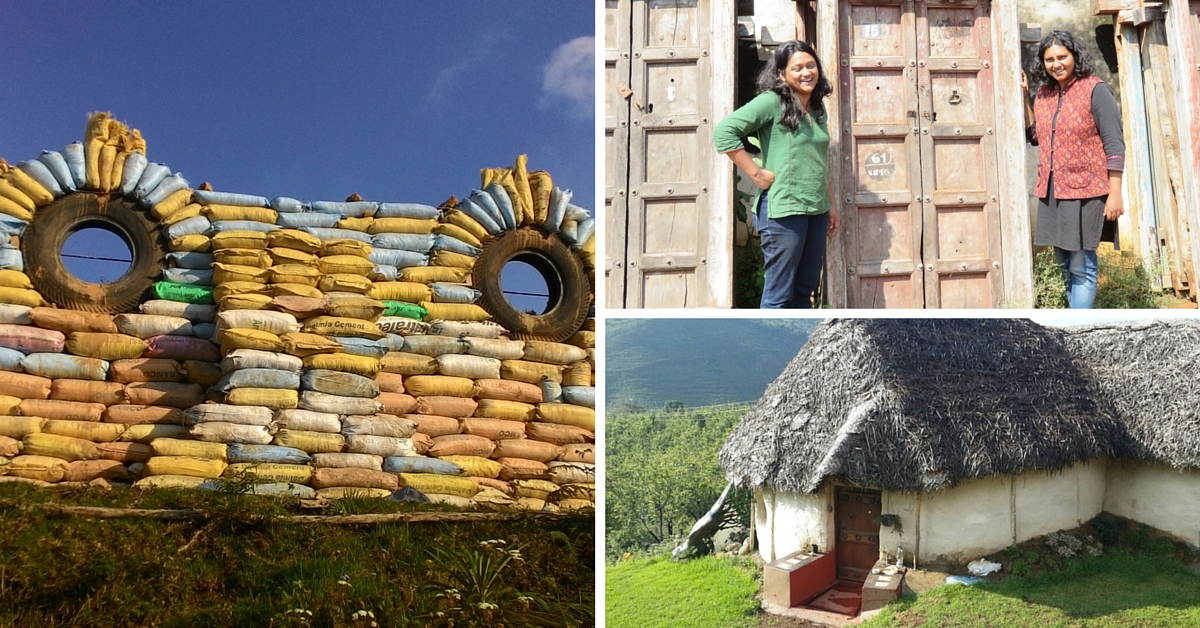
Two young women abandoned their cement homes to design and build their own sustainable mud house in Kodaikanal. They are now promoting this form of construction.
Priyashri Mani and Nishita Vasanth have been residing in a low cost, sustainable mud home that they built for themselves last year. They are extremely proud of their efforts – the result of extensive research and hard work.
Nishita and Priyashri mainly used recyclable materials for the construction of their dwelling; very few materials were sourced from outside the land on which the home is built.
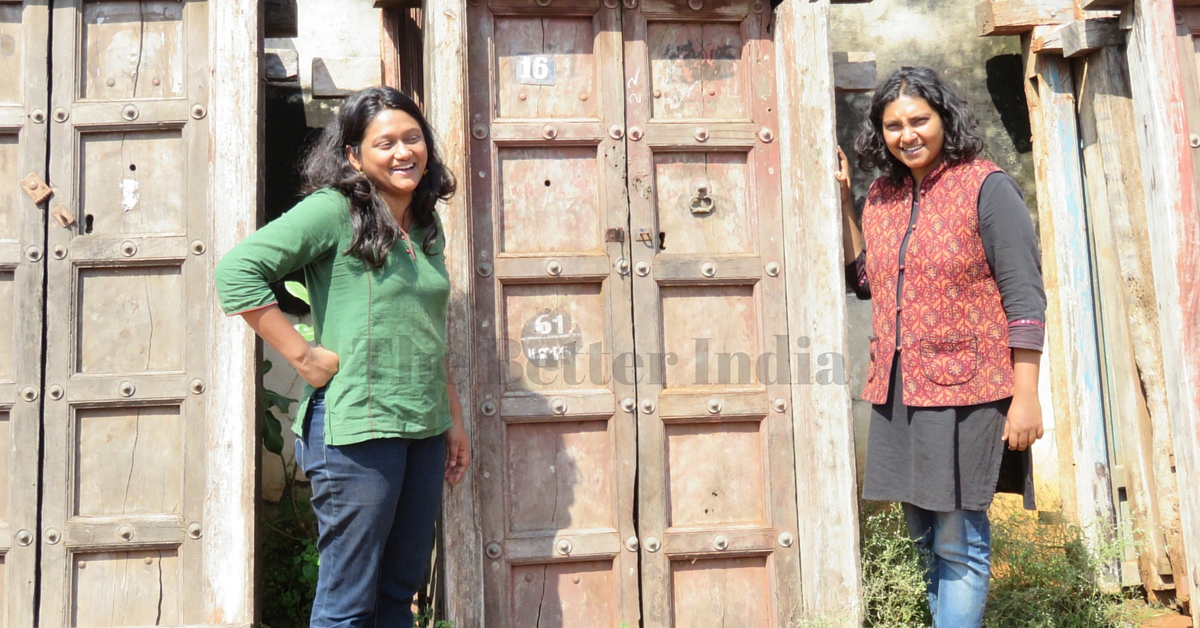
To begin with they collected old cement sacks made of polypropylene, a non-biodegradable plastic, which usually ends up choking landfills everywhere.
These bags were filled with mud and stacked one on top of the other to make the walls of their home. Barbed wire was placed between the layers of bags to hold them together, without the use of any other binding material.
Once stacked, these bags were plastered with mud or clay to reinforce and hold up the entire structure.
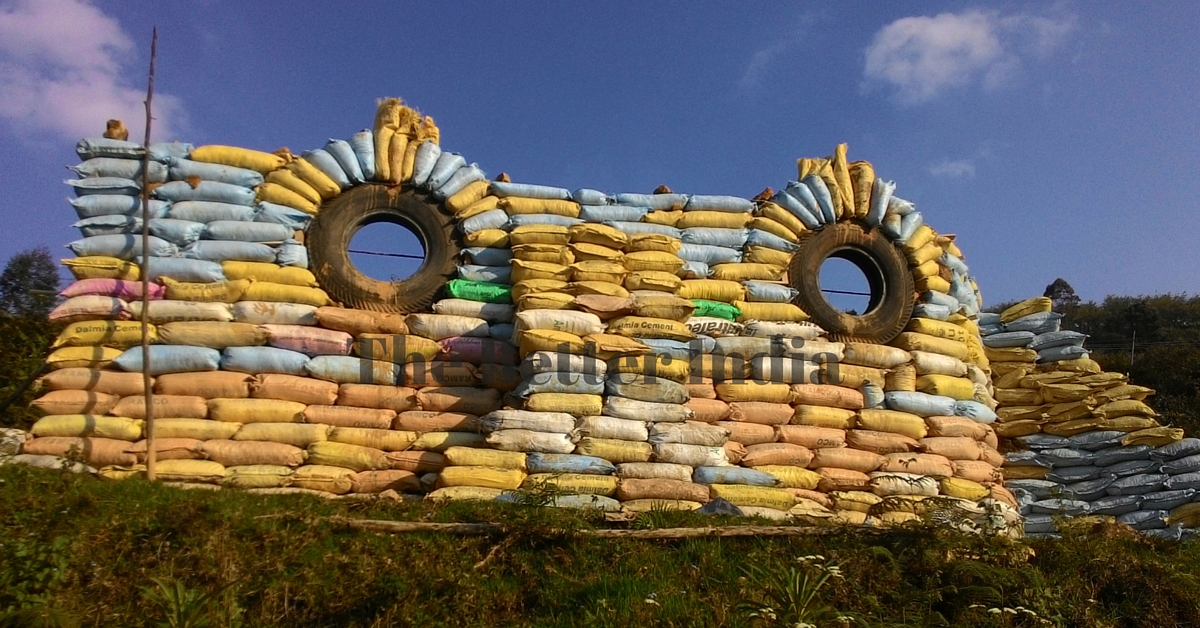
Apart from cement bags for walls and tyres for window frames, they used beer bottles in the bathroom to reflect coloured light. Most of their plastering work was done with cow dung and/or lime plaster. Another traditional building technique seen in their home is oxide flooring. The idea was borrowed from habitations in Kerala, Tamil Nadu and coastal Karnataka where builders often use oxide flooring in shades of crimson, scarlet and mustard yellow.
The living area was divided into two levels with a few steps in between. The finishing touch to these steps was given with handmade athangudi tiles, which are traditional tiles from Athangudi in Tamil Nadu. This beautiful little house has a thatched roof with wooden poles crisscrossed on the inside, for support. It was built with the help of people from the town.
The entire exercise was conducted without the help of any outside architect or builder, but only with the aid of other community residents.
‘Sweet are the fruits of labour’, whether physical, mental or both.
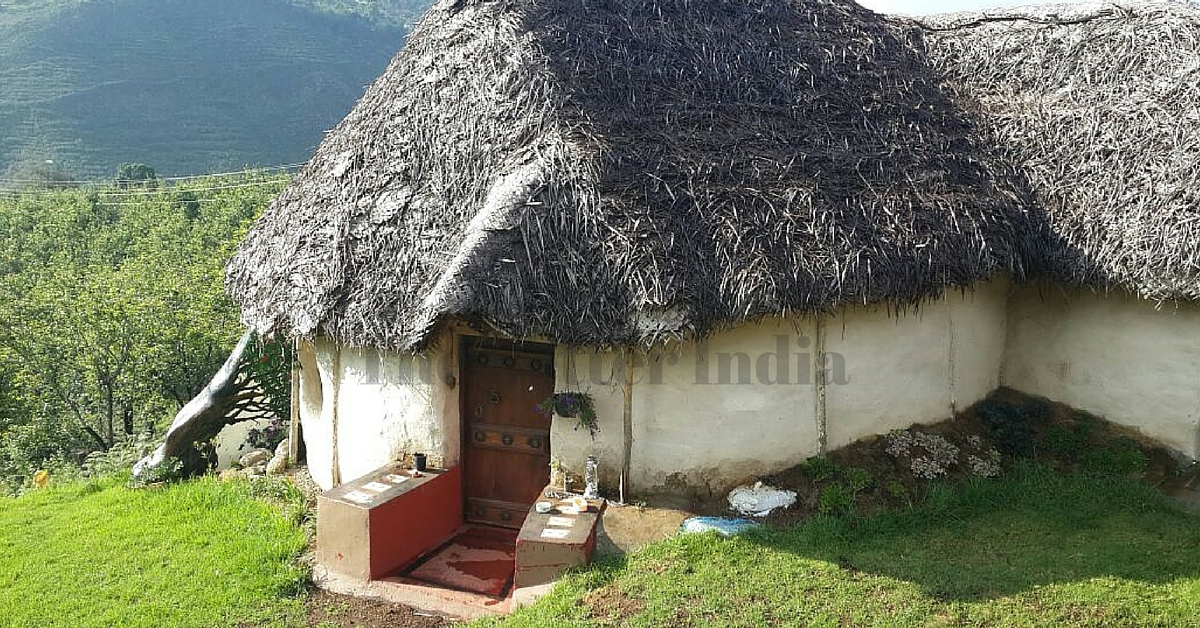
“We wanted to have the experience of working manually. From an early age we are taught to use only our minds for productive work. We wanted to see what it felt like to intensely use our bodies to achieve something. What we realised is that hard work by the body also requires the attention of the mind, resulting in something holistic that challenges both body and mind,” says Priyashri Mani.
Over the past few months, this little house has begun to feel like home.
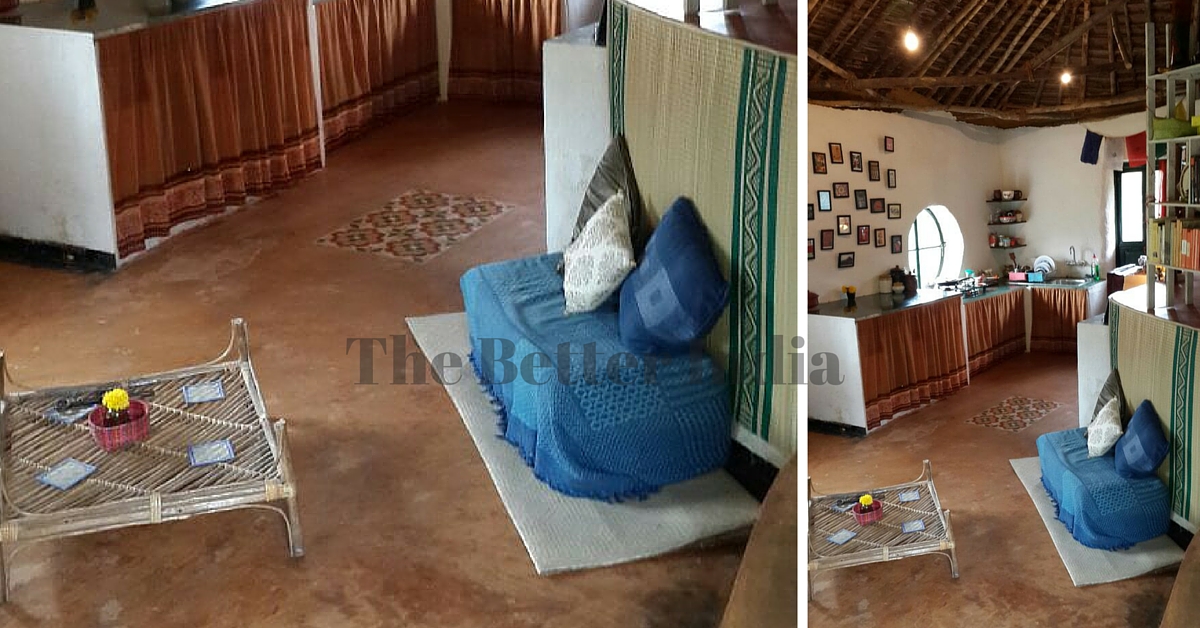
“After moving into our little house, we have made little additions to make ourselves more comfortable. We have added steps made out of tyres on the outside. We have added a simple gazebo made out of coconut mats and wooden poles. A friend has painted a beautiful rhododendron tree on one of our outer walls. We have restored old cupboards and are using them, and we have some basic furniture made from lantana – an invasive weed,” adds Priyashri.
The mud house has withstood every weather condition, including the severe monsoon last year. This has made the two friends a lot more confident about promoting their kind of homes. They believe that mud structures are beautiful and a lot cheaper than most cement constructions. Materials like mud and cow dung are a lot easier to handle, giving the owners the opportunity to be part of the construction of their own homes.
Like this story? Or have something to share? Write to us: [email protected], or connect with us on Facebook and Twitter (@thebetterindia).
Aparna Menon is a freelance writer, writing for various newspapers for the past 10 years. Her main fields of interest are wildlife, heritage and history. A keen traveler, she loves to read and write and does a lot of art work too.
This story made me
-
97
-
121
-
89
-
167
Tell Us More
We bring stories straight from the heart of India, to inspire millions and create a wave of impact. Our positive movement is growing bigger everyday, and we would love for you to join it.
Please contribute whatever you can, every little penny helps our team in bringing you more stories that support dreams and spread hope.



















